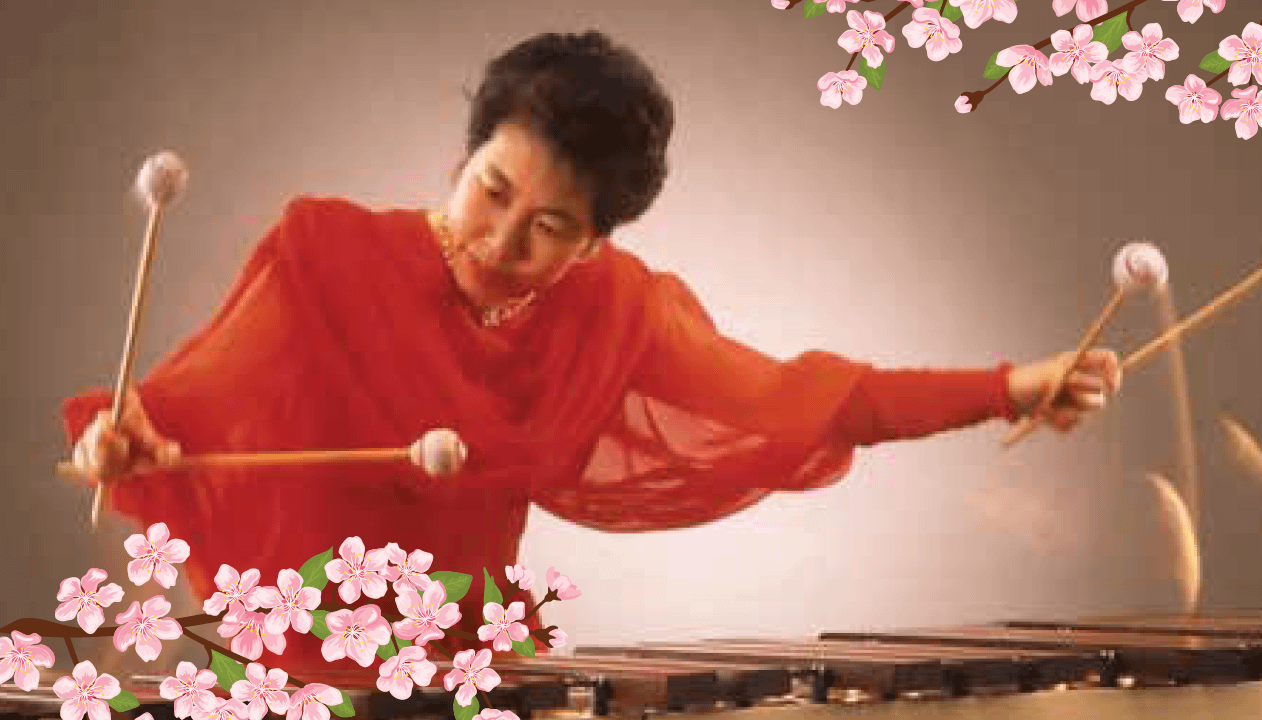 I remember when I was 21 years old and I attended the Percussive Arts Society International Convention in Columbus, Ohio.
I remember when I was 21 years old and I attended the Percussive Arts Society International Convention in Columbus, Ohio.
There were many well-known marimba players from prestigious universities performing during the convention. I remember enjoying all the impressive performances that seemed to be focused on marimba technique. Near the end of the week, a Japanese marimba player was scheduled to perform. I remember a friend saying to me “You have never heard Keiko Abe?”
I walked into the concert hall and I sat in the fifth row. I was looking forward to the performance but I had absolutely no idea regarding what I was about to experience. I also had no idea at this point in my life that attending a musical performance could be life changing. As this elderly and petite Japanese woman entered the stage, I remember being curious about her short stature emulating a huge stage presence. It was as if her presence on stage immediately commanded your entire span of attention just from her walking to the awaiting instrument. Then she began to play. From the first note, I felt an energy force in the performance hall that I had never experienced. Halfway through the first song, a tear streamed down my face. I was absolutely mesmerized and stunned at what I was watching, hearing, and feeling. I had never seen a phenomenon like this woman on stage in my entire life.
This small stature woman was about 100 feet tall when she was performing. I imagined that it would be very similar to watching Bruce Lee live in action. Her technique was amazing like the other performing marimba players and university professors throughout the week. But Keiko Abe had something else, and it was something very special. Her spiritual connection to nature and the cosmos seemed to dictate every second of her performance.
Her raw emotion and overwhelming infectious energy was something to behold. The other marimba players that performed throughout the week did not even compare and were dwarfed by this tiny woman. I remember saying to my colleagues “Now this is how it is done! This is why we play marimba! This is why we play music!” Ever since that day in Columbus, Keiko Abe has been my biggest marimba influence. I am going to give a brief review of several of the works from the woman who has revolutionized the modern marimba. These songs would be wonderful for your students to explore.
1) “Variations on Japanese Children’s Songs.” This is a four-mallet marimba work that was published in 1987. A 4.5 or 5 octave marimba is required for this song. It is 7 minutes in length and it would be considered extremely difficult. There are many shifting meters throughout and many melodic segments taken over the bar line. Independence between the right and left hand is required as the left hand bass line does not always line up with beat “one” with the melodic material occurring with the right hand melodic lines. The work requires a very aggressive performer and it utilizes the full length of the instrument. There is a rubato section in the middle that requires the performer to determine the order and rhythm of the pitches given. For this reason, it is great for developing improvisation as well. The work is a collection of folk like Japanese children’s songs that are hidden within the texture and rhythmic complexities of the overall work, requiring the listener to pay attention to the subtle melodies occurring within complex passages. It is a very enjoyable, profound, and deep composition that will take your student on a very emotion invoking journey through folk Japanese children’s melodies.
2) “Wind in the Bamboo Grove.” This is a four-mallet marimba work. It is 6 minutes long and it utilizes the entire length of a 5 octave marimba. It is considered extremely difficult. The work is meant to recreate the sound of bamboo in a nature grove as well as the spiritual emotions that manifested within Keiko Abe as result. There are a few beautiful interludes, although the composition is fast and aggressive for the most part. It has some fast double lateral runs going down the marimba that are best suited for an advanced marimba player. There are also sections where the performer is required to strike the marimba bars with the shaft of the marimba, recreating the sound of bamboo being manipulated by the wind inside the grove. This is a very beautiful and spiritually oriented work based on the energy of nature. It is also a wonderful addition to the repertoire of your advanced marimba players.
3) “Frogs.” This is a piece that is suitable for the moderate level marimba player. It requires a 4 octave marimba and its duration is 3 minutes long. It is an excellent work for collegiate students who are developing four mallet technique. It is Keiko Abe’s first solo composition and it is considered a classic for solo marimba literature. It features playful lines that “jump” across the instrument, recreating the sound or mental vision of frogs jumping in nature. It requires moderate technical development as well as the ability to perform at extreme dynamic levels. It covers many different techniques and styles within one work, including short one-handed rolls and a brief chorale. For this reason, it is an excellent work for your student’s development.
Keiko Abe has established herself as a world class marimbist who has an amazing combination of creative power, sensitivity, and amazing virtuosic technique. Your students will absolutely love her works and they will immediately connect to her spiritual and emotional approach to the instrument. Keiko Abe’s repertoire can be found at Steve Weiss Music, Lonestar Percussion, and Amazon.








